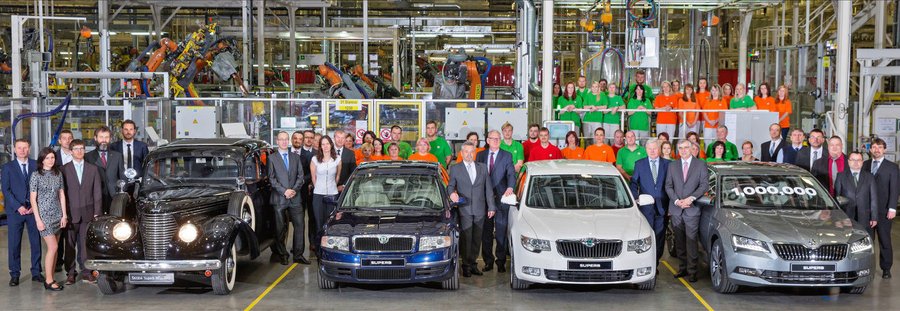Originally introduced back in 1934, the Superb was Skoda's first model to be offered with a V8 engine and an all-wheel-drive layout. Phased out in 1949 after 2,500 units, it wasn't until 2001 when the nameplate was brought back to life for what essentially was a stretched Volkswagen Passat B5 with a Skoda badge.
The level of equipment was quite impressive compared to previous models from the brand, with niceties including xenon headlights, heated seats, sunroof, navigation, and a generous array of safety kit. 136,100 units were made until 2008 when the car was retired to make room for the second (modern) generation.
Unveiled at the 2008 Geneva Motor Show, the Superb II was bigger than its predecessor and spawned an even more spacious wagon body style a year later. It was considerably more successful than the model before it taking into account Skoda shipped 618,500 cars until 2015 when it was discontinued.
The third-gen Superb was launched in March 2015 and is turning out to be a big success for the Mladá Boleslav brand taking into account 250,000 units have already been produced.
The one millionth Superb was assembled at the Kvasiny plant in the Czech Republic, but the flagship is also manufactured in several other countries. The milestone car is a top-of-the-line Laurin & Klement liftback model sitting alongside its three predecessors for a family portrait. The Superb has already been confirmed to be Skoda's first car to adopt a plug-in hybrid powertrain. It will happen in 2019, but a mid-cycle facelift will likely occur sooner than that.
There's a bit of an odd situation right now since the Octavia facelift and the Kodiaq are both available with full-LED headlights whereas the more expensive Superb is still stuck with bi-xenon + LED daytime running lights. It's the same story inside the cabin where the inferior Octavia and the big SUV come with the new fancy infotainment systems featuring a glass design and capacitive touch buttons while the Superb has the old setup with physical controls. These discrepancies will certainly be addressed with the mid-cycle refresh or perhaps even earlier.

